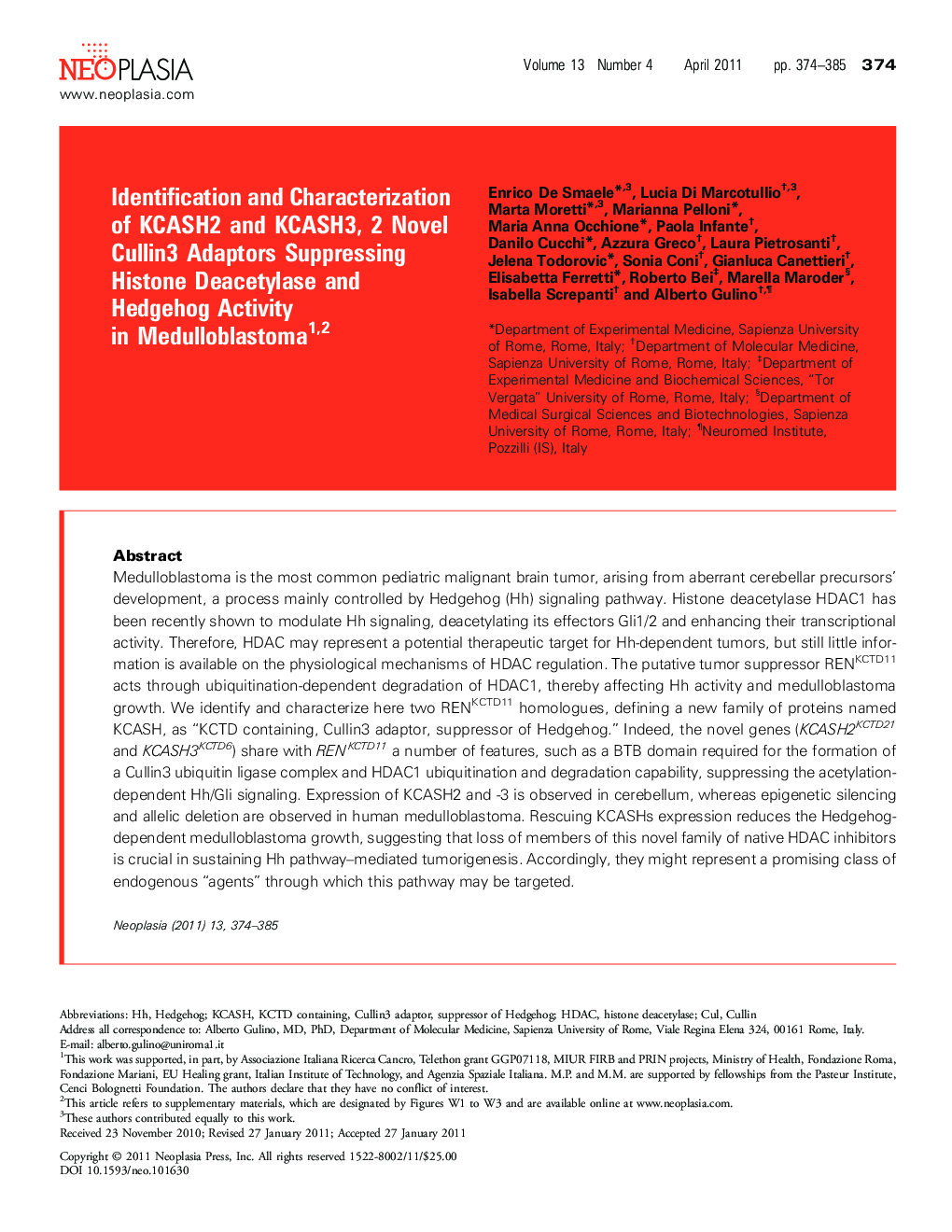| Article ID | Journal | Published Year | Pages | File Type |
|---|---|---|---|---|
| 2151827 | Neoplasia | 2011 | 15 Pages |
Abstract
Medulloblastoma is the most common pediatric malignant brain tumor, arising from aberrant cerebellar precursors' development, a process mainly controlled by Hedgehog (Hh) signaling pathway. Histone deacetylase HDAC1 has been recently shown to modulate Hh signaling, deacetylating its effectors Gli1/2 and enhancing their transcriptional activity. Therefore, HDAC may represent a potential therapeutic target for Hh-dependent tumors, but still little information is available on the physiological mechanisms of HDAC regulation. The putative tumor suppressor RENKCTD11 acts through ubiquitination-dependent degradation of HDAC1, thereby affecting Hh activity and medulloblastoma growth. We identify and characterize here two RENKCTD11 homologues, defining a new family of proteins named KCASH, as “KCTD containing, Cullin3 adaptor, suppressor of Hedgehog.” Indeed, the novel genes (KCASH2KCTD21 and KCASH3KCTD6) share with RENKCTD11 a number of features, such as a BTB domain required for the formation of a Cullin3 ubiquitin ligase complex and HDAC1 ubiquitination and degradation capability, suppressing the acetylation-dependent Hh/Gli signaling. Expression of KCASH2 and -3 is observed in cerebellum, whereas epigenetic silencing and allelic deletion are observed in human medulloblastoma. Rescuing KCASHs expression reduces the Hedgehog-dependent medulloblastoma growth, suggesting that loss of members of this novel family of native HDAC inhibitors is crucial in sustaining Hh pathway-mediated tumorigenesis. Accordingly, they might represent a promising class of endogenous “agents” through which this pathway may be targeted.
Related Topics
Life Sciences
Biochemistry, Genetics and Molecular Biology
Cancer Research
Authors
Enrico De Smaele, Lucia Di Marcotullio, Marta Moretti, Marianna Pelloni, Maria Anna Occhione, Paola Infante, Danilo Cucchi, Azzura Greco, Laura Pietrosanti, Jelena Todorovic, Sonia Coni, Gianluca Canettieri, Elisabetta Ferretti, Roberto Bei,
